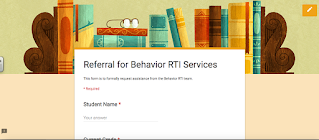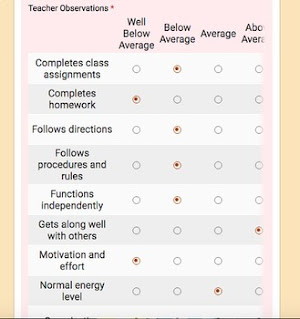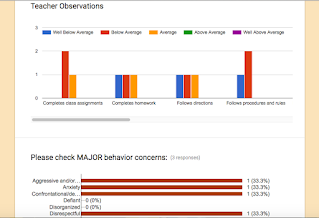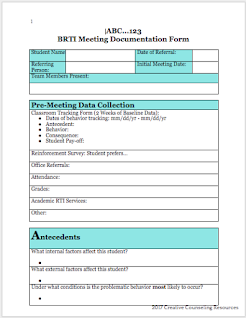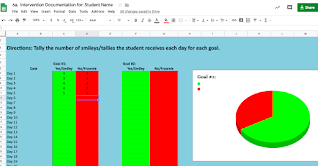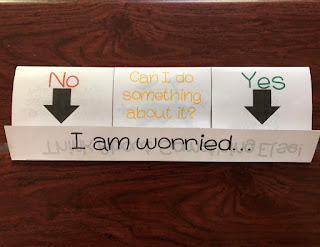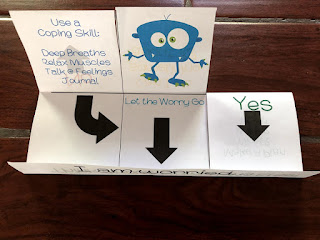Introduction:
In this blog post, I want to share my experience of developing a Behavior RTI (Response to Intervention) program alongside my co-counselor. While I'm not an expert or a paid consultant, I'll provide insights into how we tackled this undaunting initiative and established a streamlined process.
Transitioning to BRTI Management:
Back in 2015, our school district entrusted school counselors with the enormous role of managing the Behavior RTI program. While we received some guidance from the District Office regarding tier structures and suggested interventions, we were essentially starting from scratch. We had no set procedures, forms, or ready-made solutions to rely on. This compelled us to conduct extensive research and prioritize the development of teacher-friendly guidelines.
Creating Streamlined Guidelines:
Understanding that teachers have busy schedules and lengthy forms can be grueling, our goal was to make the BRTI process clear, concise, and easily manageable. To achieve this, we established a shared Google folder housing all the necessary forms. The first form we deemed crucial was a simple flowchart, condensing the BRTI Program Overview onto a single page. Using our district's RTI guide for elementary schools, which encompassed both academic and Behavior RTI services, we crafted an overview highlighting the step-by-step process through the tiers.
Simplifying the Referral Process:
Recognizing the importance of an accessible and user-friendly system, we designed an Online Student Referral Form for teachers and other stakeholders to request BRTI team meetings for tier 2 or 3 services. This form features checkboxes, allowing completion within just 5 minutes. Clicking on the provided link directs users to the referral form, which collects essential information for the team's discussion and planning.
Referral Form Details:
The referral form prompts the referrer to provide relevant background information about the student, including strengths, historical context, teacher observations, and the most challenging behaviors exhibited. To offer a clearer picture, an example of the form's results is illustrated below.
Efficient Data Management:
Upon receiving a request for BRTI services, a dedicated Google folder is created for the referred student. This folder is then shared with the core BRTI team, enabling seamless access to all pertinent data related to the student. This centralized approach facilitates effective collaboration among team members.
Effortless Behavior Tracking:
To streamline the data collection process, we developed an Online Behavior Tracking Form accessible via a provided link. Teachers can conveniently complete the form within just 1 minute per behavior incident. By saving the link to their bookmark bar, teachers can easily access the form whenever needed. Alternatively, teachers can opt for a paper-pencil version and enter the data using the link later.
Understanding the Online Form:
The online form encompasses four essential areas: Antecedent, Behavior, Consequence, and Student's Pay-off. Teachers provide details about what triggers the behavior (Antecedent), specify the most problematic behavior, describe the resulting consequences, and identify what the student gains from engaging in the behavior. This information allows us to design targeted interventions that prevent problematic behaviors and promote desirable ones.
Comprehensive Data Gathering:
In addition to the behavior tracking data, the team can collect various other forms of data during the two-week period. This includes information such as grades, attendance records, office referrals, reinforcement outcomes, and academic RTI data. Gathering a diverse range of data enriches our understanding of the student's overall performance and helps tailor interventions more effectively.
Reviewing Data and Identifying Patterns:
After two weeks of collecting data, our core BRTi Team meets. During the BRTI meeting, the team carefully examines all the collected data, including the Behavior Tracking records, to gain insights into the student's behaviors. By analyzing this information, we can identify patterns in antecedents and problematic behaviors, providing valuable clues for intervention planning. This collaborative approach ensures that multiple perspectives contribute to the decision-making process.
Introducing the ABC . . . 123 Form:
To facilitate documentation and maintain a structured approach during BRTI meetings, we created the ABC . . . 123 Form. This form captures essential elements of the discussion and planning process. It includes sections to record data collected, document observed patterns related to antecedents and problematic behaviors, and outline agreed-upon behavioral goals and interventions. By utilizing this form, the team ensures consistency and clarity in tracking progress and maintaining a comprehensive record of the meeting outcomes.
Tailoring Interventions:
Based on the data analysis and discussion during the BRTI meeting, the team collaboratively decides which Tier-level interventions will effectively address the identified barriers to learning for the student referred for BRTI services. These interventions are designed to support the student's behavioral growth, provide targeted support, and promote a positive learning environment.
Behavior Report Cards for Documentation and Accountability:
At our school, Behavior Report Cards serve as valuable tools for teachers to document student progress and behaviors. They can be implemented using smileys/frownies or points, depending on the age of the students. These report cards not only assist teachers in keeping track of student behaviors but also foster accountability and goal attainment. Students can earn privileges or rewards based on their points, reinforcing positive behavior choices.
Electronic Goal Tracking for Efficient Data Collection:
To streamline the data collection process and ensure easy access to progress records, we utilize an Electronic Goal Tracking Data Collection Google Sheet. This sheet is stored in the shared student folder, allowing teachers to input documentation on a daily basis. As data is added, the Google Sheet automatically updates the accompanying pie chart, providing a visual representation of progress. The shared folder enables the core team to view the student's progress at any given time, promoting collaboration and informed decision-making.
Review Meeting and Follow-up Documentation:
Approximately 6-8 weeks after the initial BRTI meeting, we conduct a review meeting to assess the progress of the student's behavioral goals. During this meeting, the core team discusses whether any adjustments are needed regarding goals, interventions, or Tier status. To ensure comprehensive documentation, the follow-up section of the ABC . . . 123 form is utilized to record the outcomes of the review meeting. This documentation captures the team's discussions and decisions, providing a valuable reference for future planning and support.Conclusion:
Overall, the Behavior RTI program enhances data-driven decision-making, promotes collaboration among the core team, and empowers students to take ownership of their behavioral growth while creating a positive and supportive learning environment.
Top 10 Benefits:
- Streamlined Process: The development of teacher-friendly guidelines and a clear, concise process ensures a streamlined approach to Behavior RTI implementation.
- Enhanced Accessibility: The Online Student Referral Form and Online Behavior Tracking Form provide easy access for teachers and stakeholders, simplifying the process of requesting BRTI meetings and documenting behavior incidents.
- Efficient Data Management: The creation of a dedicated Google folder for each referred student allows for centralized storage and seamless sharing of data among the core BRTI team, promoting effective collaboration.
- Targeted Interventions: By analyzing data collected from various sources, including Behavior Tracking records and additional data points, the team gains insights into patterns and triggers, enabling the design of targeted interventions to prevent problematic behaviors and promote desirable ones.
- Documentation and Accountability: The use of Behavior Report Cards facilitates documentation of student progress and behaviors, fostering accountability for both teachers and students. This tool can also be shared with parents to promote transparency and involvement in the student's behavioral growth.
- Efficient Data Collection: The implementation of an Electronic Goal Tracking Data Collection Google Sheet simplifies the process of collecting and tracking progress data. Teachers can input documentation daily, and the accompanying pie chart provides a visual representation of progress.
- Collaboration and Decision-making: Review meetings held approximately 6-8 weeks after the initial BRTI meeting allow the core team to assess goal progress and make necessary adjustments. The ABC . . . 123 form facilitates structured documentation, ensuring consistency and clarity in decision-making.
- Tailored Interventions: The collaborative decision-making process during BRTI meetings helps identify and select the most appropriate Tier-level interventions to address barriers to learning. This personalized approach ensures targeted support for students' behavioral growth.
- Promotes Positive Learning Environment: The combination of Behavior Report Cards, goal tracking, and targeted interventions fosters a positive learning environment where students are accountable for their behavior choices and have the opportunity to earn rewards or privileges based on their progress.
- Comprehensive Documentation: The use of various forms, such as the referral form, ABC . . . 123 form, and electronic goal tracking sheet, ensures comprehensive documentation of the BRTI process, providing a valuable reference for future planning and support.
Ready to Use Resource!
Ready to streamline your Behavior RTI program and enhance student outcomes? Take the next step towards effective behavior intervention by investing in this comprehensive Behavior RTI program today.
With this program, you'll benefit from a streamlined process, teacher-friendly guidelines, and efficient data management. Simplify the referral process, track behaviors effortlessly, and gather comprehensive data to inform targeted interventions. This program promotes collaboration, documentation, and accountability, ensuring that every student receives the support they need to succeed.


